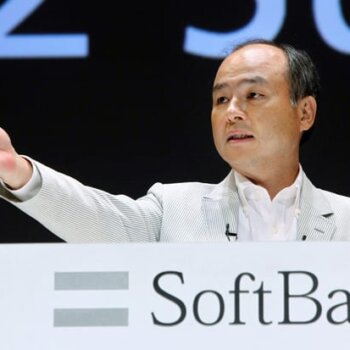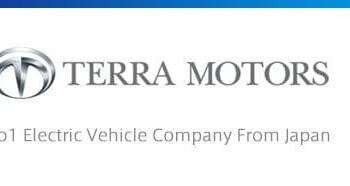We have all seen statements such as “Uber is worth four times more than Hertz, and it doesn’t own a single car.” While there is a kernel of truth to this statement–Uber’s latest round valued the company at $40B while Hertz’s current market capitalization is $10B–the difference between startup valuations (so-called “unicorns” with valuations of $1 billion or more) and publicly held companies’ market capitalization is so profound that the two are hardly comparable. Understanding the distinction is vital if we want to cut through hype, understand risk and assess the market changes underway.
It Is Important To Put The Hype Into Proper Perspective
To be clear, I am a big fan of digital, mobile, Internet of Things (IoT), big data and collaborative economy opportunities, and I believe they will continue to grow and challenge traditional forms of business. That does not mean, however, that I believe every startup will win or that VC valuation decisions are a valid yardstick for comparing financial worth between VC-funded firms and public corporations.
While the hype around new these nascent businesses can benefit established firms by forcing them to take notice, it can also hurt by setting unrealistic expectations. Back in the dot-com era, established companies were spooked by all the e-commerce hype and leapt without considering the hard work and long road ahead.
In the late 90s, the buzz about Silicon Valley valuations and the focus on gaining new users rather than revenue models created an environment for silly decisions. Acting fast was more important than devising the right strategy; having a website was the goal rather than retooling the organization for a digital world; and patience was in short supply. When companies’ new ecommerce programs did not instantly deliver profits, many companies diminished investment in digital efforts, only to reinvest years later to match growing consumer demands and competitive threats. Some firms even opted out of the ecommerce race altogether–Borders sealed its fate when the company got frustrated with dot-com losses and turned over its soon-to-be-vital online business to Amazon.
Valuation hype encourages short-term rather than strategic thinking. How can it not as headlines continue to trumpet Uber’s rise from $60 million in 2011 to $300 million later in 2011 to $3.5 billion in 2013 to $17 billion early in 2014 to $41 billion before the end of 2014? That means from February 2011 to December 2014, Uber increased its valuation by almost $30 million per day. There’s gold in them thar hills, and just like every other gold rush, there will be more losers than winners.
This is why a more sober view of IoT, big data, mobile and sharing economy opportunities would be beneficial. Established companies need to be less impressed with billion-dollar valuations and more concerned with consumers’ changing habits around media consumption, mobile adoption, wearables and collaborative consumption. While Uber’s, Slack’s, Snapchat’s and Sprinklr’s $1 billion+ valuations make it seem the brass ring can be snagged on the next turn of the merry-go-round, the fact is that real, defensible, consistent success will require years of hard work for these companies–and yours.
Startup Valuations And Corporate Market Caps Are Fundamentally Different
Both startup valuations and publicly held companies’ market capitalizations begin with a dollar sign. Beyond that, the two have little in common.
Market cap is set by millions of investors buying and selling shares in an open market based on information the company publishes adhering to stringent SEC rules that ensure a fair marketplace. You can find a company’s market cap on any finance site (Apple’s is $740 billion), or you may easily compute it yourself using public data (Apple’s share price of $127.10 multiplied by its 5.82 billion shares outstanding).
Startup valuations are set by a much different process–secret backroom deals between a very small number of parties. The company and its VC partners do not make their negotiations, financial information or terms of the deal public. In fact, even the valuations themselves are not really part of public record but instead are announced (or not) by the parties involved.
The differences between the two are evident:
- Value determination: Market caps are set by a vigorous marketplace that is as close to an economically “perfect market” as exists on the planet. On an average day, investors buy and sell 48.5 million shares of Apple stock, and this is the mechanism that determines the corporation’s value (or market cap). Startup valuations are set behind closed doors based on the evaluations of a small number of deep-pocket venture capitalists, and unlike liquid shares of stock, once the funding round is complete, startup investors have limited and complicated ways in which to divest themselves of their investment.
- Available information: You and I may come to a different decision as to the future opportunities for a publicly held corporation, but by law, we both must have access to the same information disseminated by the company. Thanks to SEC filings and annual reports, we can see the same detailed information about company performance, from revenue to profit/loss and even management’s assessment of potential risks. For example, in Facebook’s recent 10-K filing, it acknowledges, “We believe that some of our users, particularly our younger users, are aware of and actively engaging with other products and services similar to, or as a substitute for, Facebook.” Compare that to what we know of Airbnb’s and Uber’s performance, growth, risks and management assessment (which is, essentially, nothing).
- Performance history: Another obvious difference is that publicly held companies generally have well-established business models that demonstrate a track record. By comparison, the business models of startups are new, untested and evolving rapidly. We know Uber for its ride-sharing service, but the company is also testing new ideas like UberRush, a package delivery service, and UberFresh, a Seamless competitor for food delivery. Whether these two services catch on and produce profits is uncertain, but it is apparent Uber is still figuring out its business model.
- Known versus unknown risks: Along with more performance history comes a strong sense of the known risks faced by publicly held companies. While established companies face new laws and lawsuits every day, leaders and shareholders understand the type of legal risks the company faces. In comparison, the risks inherent with startups like Uber and Airbnb are poorly understood and rapidly developing. From labor laws to legal liability to taxation to compliance with state and local regulation, the future profitability and growth of these startups is less certain due to the unknown risks.
- Special deals: The final reason public corporations’ market caps are profoundly different than startup valuations is that VC firms don’t invest millions (or hundreds of millions) without negotiating special conditions to protect their interests. According to Bloomberg, startups offer incentives for big-number late-round investments, such as guarantees that the VCs will get their money back first if the company sells or will earn additional free shares if a subsequent round’s valuation is less favorable. By contrast, an individual shareholder in a corporation cannot ask for special consideration outside of rare special circumstances, such as when one accumulates a significant portion of shares (Carl Icahn forced Ebay to consider splitting Paypal from the rest of the company) or bands together with other activist shareholders (such as when the Humane Society attempts to force a change in Kraft policies by engaging shareholders via SEC filing.)
Bombs Versus Screen Passes–The Risk/Reward Continuum
The mechanisms, information, marketplace and bargaining power of parties is profoundly different for the funding rounds that determine startup valuations than for the stock market that determines corporations’ market caps, but it all comes down to one thing: Risk.
Headlines about startup valuations promote just one concept–value–while ignoring the other equally important attribute that drives all investing and pricing decisions–risk. To simply compare the (supposed) value of two wildly different organizations (or any dissimilar assets) without also considering questions of risk makes the two dollar amounts seem equivalent, but they are far from it.
To draw an analogy from the world of football, the average screen pass earns a little over 5 yards per attempt while a “bomb” pass attempt delivers an average 12-yard gain. Given this data point, why do teams ever run or throw for short yardage when each deep pass averages a first down? The answer, of course, is risk–a long pass is a low percentage play, so even though the average completion delivers over 50 yards for the offense, fewer than one in four passes of 40 yards or more are completed. By comparison, the completion rate for screen passes is 79%.
Football coaches do not assess the relative value of one play over another based solely on average yardage. This is why teams tend to stick to higher percentage and safer short plays most of the time, turning to the more risky, lower-percentage plays when they trail late in the game.
In the same way, venture capital firms are in the business of making lower-percentage, high-risk investments with the hope that, across a wide portfolio of similar long-shot investments, a few will pay off handsomely, even though most will fail. In fact, just like deep passes in football, three out of four startups fail. Meanwhile, like a screen pass, an investment in a NYSE listed stock may not yield spectacular gains, but it is not likely to fail outright, either.
The Unicorn Population Explosion And What’s Ahead
In times when money is cheap, a great deal of cash gets invested into innovative startups, elevating valuations and making headlines. Once money gets tighter, as it inevitably does, many of those startups suffer.
We saw this back in the dot-com era, when firms like Webvan were briefly valued at over $1 billion–what we today label a “unicorn”–before going under within a year. They were hardly alone–Pets.com made a splashy IPO in 1999 and liquidated just 268 days later, and eighteen months after eToys was valued at more than $8 billion, KB Toys bought its intellectual assets for just $3.4 million. Even the companies we know today as successes took an enormous hit when the dot-com bubble burst–Amazon lost more than 80% of its market cap from 1999 to 2001 and required six more years to return to its pre-crash value.
Today, cheap money is again flowing into startups. Business Insides notes that, “The use of the term ‘unicorn’ began with a blog from investor Aileen Lee of Cowboy Ventures in late 2013, when there were just 39 of the creatures and an average of four ‘born’ each year. The number created in 2014 rose to 38, according to CB Ventures.”
Some say today’s VC investments are different from those during the dot-com hysteria; that today’s valuations are more justified and less risky. There may be some evidence they are correct. Collaborative startups such as Uber and Airbnb have business models (and probably even net income) in a way that many of the startups in 1999 did not. Still, other unicorns have a long way to go–Snapchat’s last funding round valued the company at $15 billion (a 50% increase from nine months earlier) despite the fact the company was rumored to have virtually no revenue (much less profit) prior to launching its untested advertising program this year.
While established firms worry about competition from the startups, the startups themselves also have some unique competitive threats. Many folks who watch the collaborative economy space love to crow how the collaborative economy firms have established huge valuations despite owning virtually no assets. They are correct–Airbnb owns no rooms yet soon will rent more rooms than the world’s largest hotel chains, and Uber owns no cars and is about to overtake taxis, limos and airport shuttles in the expense accounts of American business travelers–but this may be as much a problem as a benefit. Owning few assets allows for incredible leverage of cash, but it also means that barriers to entry and customer switching costs are incredibly low, as well.
Airbnb and Uber excel at providing a terrific customer experience, so neither is in imminent danger from competitors, but we should not forget that Myspace was once praised in the same way as today’s collaborative startups. Insiders used to point out Myspace created and paid for no media, unlike the NY Times or NBC. Just like today’s collaborative startups, Myspace enjoyed extreme leverage on its assets because consumers created content for each other at no cost to Myspace, and just like today’s startups, Myspace owned nothing and had low barriers to entry, so it could not stem the loss of users once Facebook attracted critical mass.
It is hard to imagine the same thing happening to Airbnb or Uber, but then it was impossible to foresee that Myspace would crash when, in 2006, it surpassed Google as the most visited website in the United States. In fact, compared to the challenges of creating a profile and moving your entire social graph from Myspace to Facebook, the ease of installing a new app on your phone to order a car or reserve a room seems like child’s play.
 |
| Social Media stocks vs. NASDAQ, YTD |
So what is ahead for these startups? Silicon Valley analysts are voicing concern, and we have already seen some newer firms stumble. As recently as 2013, Fab was valued at nearly $1 billion, but in March, the remains of Fab were acquired for just $15 million. Meanwhile, I have been tracking the performance of a dozen US social media stocks that are post-IPO, and in 2014 they under-performed the market. Thus far in 2015, that trend has continued–NASDAQ is up 5.7% as of April 11 while a portfolio of social stocks (including Facebook, Twitter, Marketo, Jive, LinkedIn, Zynga, HomeAway and Groupon) is up just 0.5%.
Becoming A Unicorn Is Not A Reward–It’s A Challenge
We would all be better off if we viewed billion-dollar valuations not as accomplishments but as challenges. Having a VC with an appetite for high risk assess your company at $1 billion is one thing, but it is quite another to reach a future state where that valuation is justified in a transparent and open market based on mature and recurring profitability.
Today, growth, opportunity, optimism and high risk propensity are driving startups’ valuations, but in a few years–after the VCs claim their return and the firms go public–these companies’ values will be determined more by stable business models as measured by revenue and net income. For Uber to justify its $40B valuation, it must someday deliver a stable or growing bottom line of between $1 billion and $2 billion.
If we all kept startup valuations in the right perspective, it would help us to appreciate the hard work ahead, both for firms like Uber and Airbnb, but also for our own companies. Ecommerce hype elevated startup values in the dot-com era and caused many companies to act out of panic, yet it has taken 15 long years for ecommerce to account for just 7% of total US retail sales.
Just as Kodak, Borders, Circuit City and others lost out by not acting quickly enough, your firm needs to establish its strategy in mobile, IoT, big data and collaborative economy business models sooner rather than later. But be careful not to buy into the hype so much that you think acting fast will deliver rapid bottom-line results. The future is here, but it will not drive your business results for many years.
________________________________________________
About the Author
This article was written by Augie Ray of ExperienceTheBlog.com. Angie is the Director of Global Voice of Customer Strategy for a Fortune 100 financial service company. His background includes more than 20 years of experience in digital, brand, customer experience and social business. See more of his work.





























